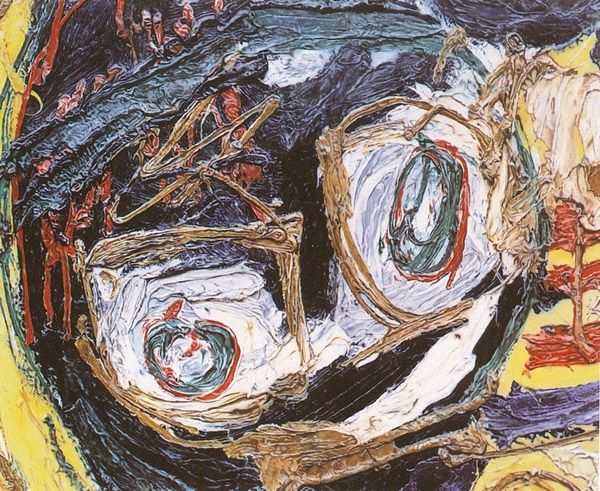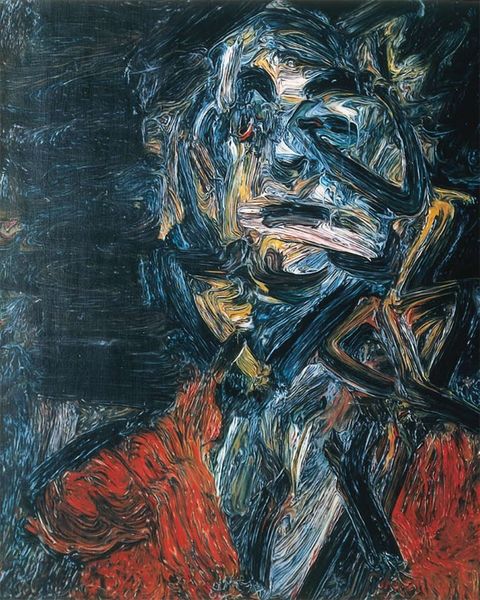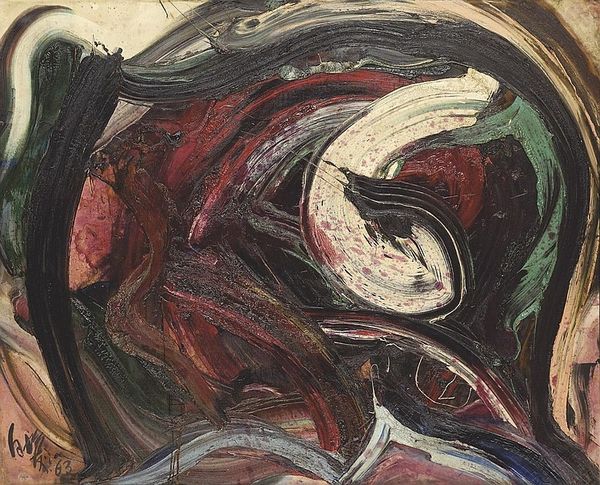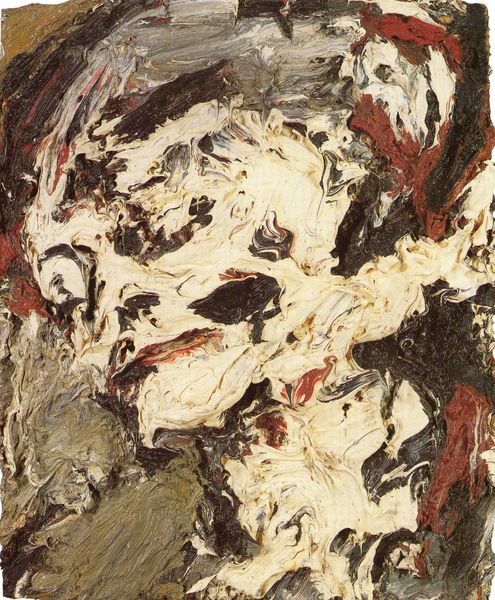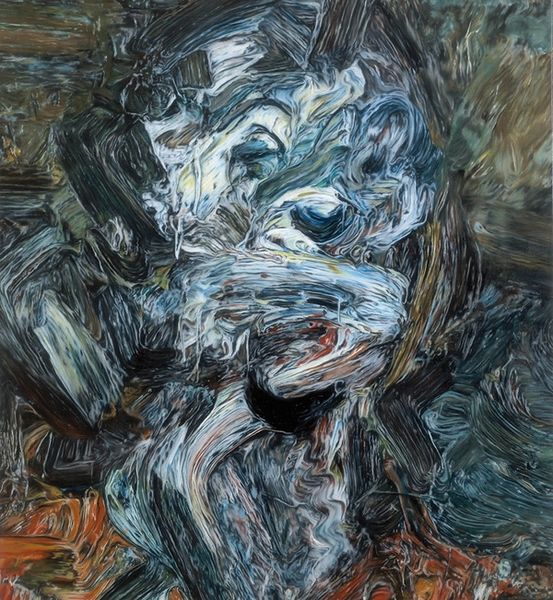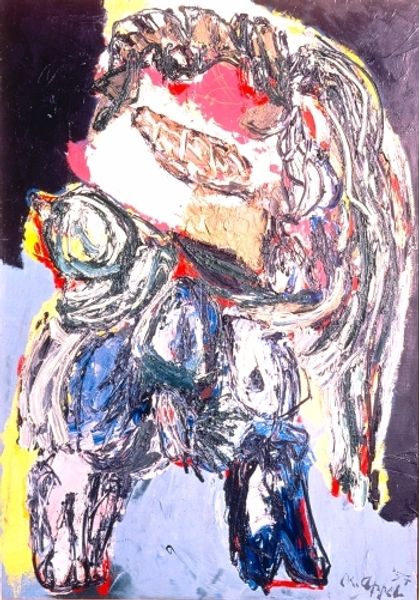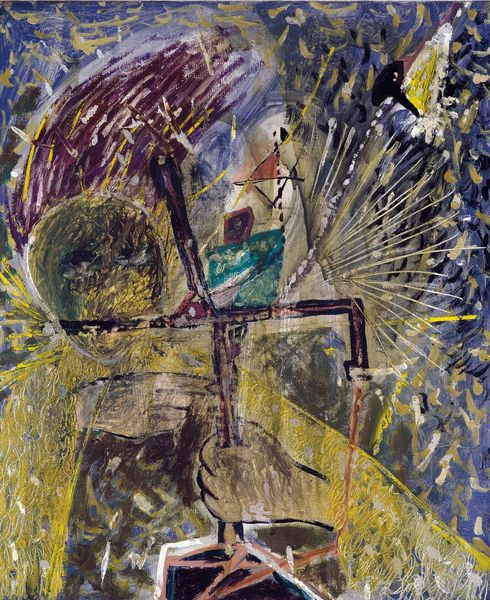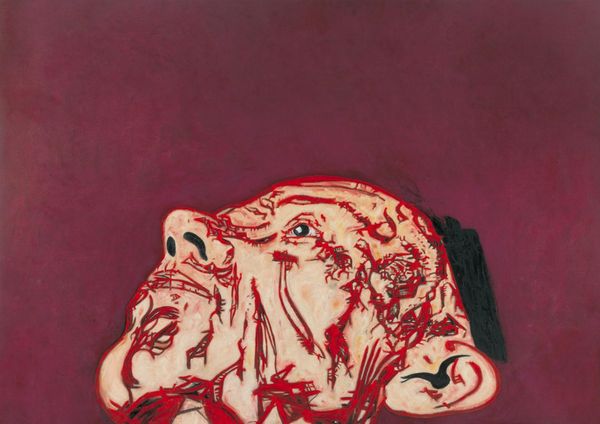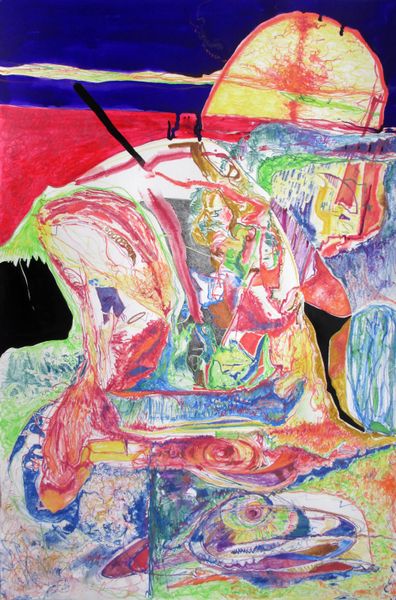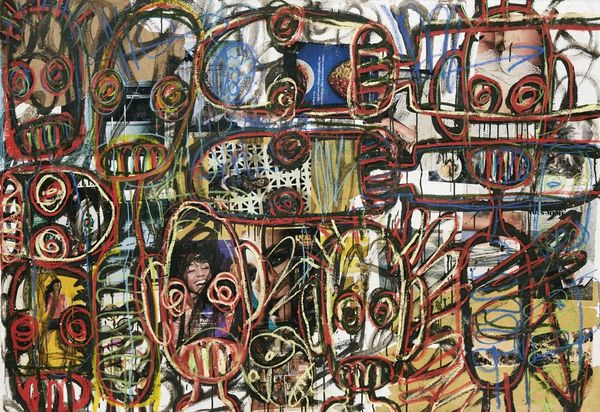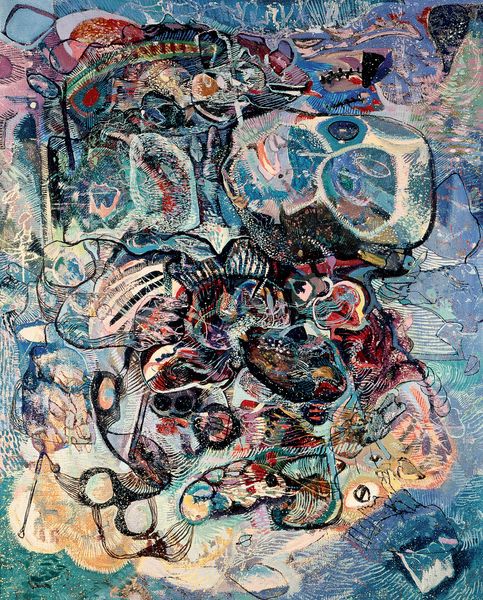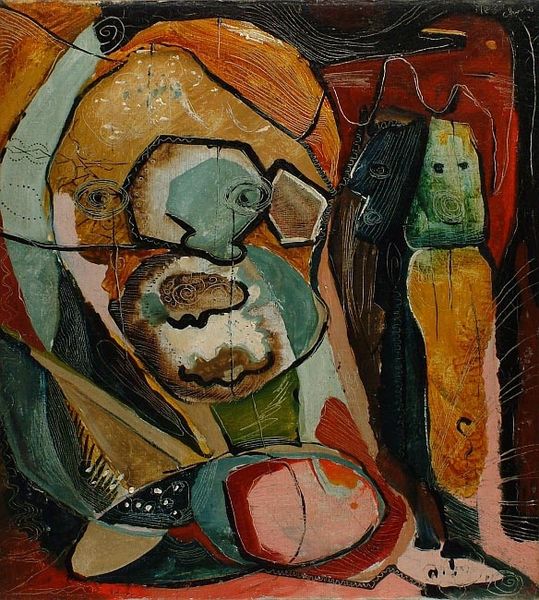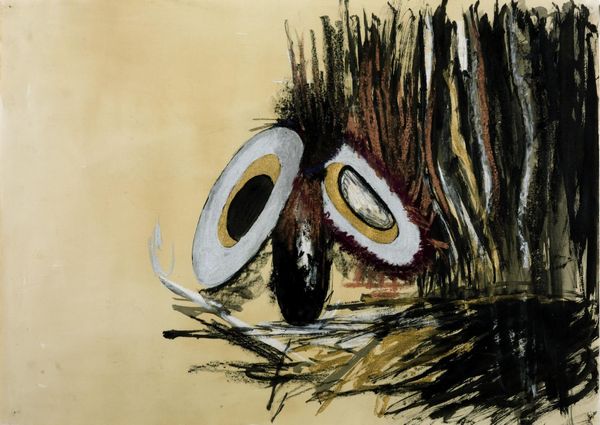
Copyright: Glenn Brown,Fair Use
Editor: This is Glenn Brown’s "Mad Love," created in 1991 with oil paint. At first glance, the swirling textures and strange coloring make it seem almost grotesque, yet also strangely compelling. How would you interpret this work, focusing on its formal elements? Curator: The formal arrangement of this work is quite remarkable. Notice how Brown has manipulated the oil paint to create swirling, almost topographic, layers. This impasto technique builds a tactile surface, disrupting any sense of depth. Editor: I see what you mean about the surface. The texture really pushes forward, denying the illusion of space. Curator: Precisely. Furthermore, observe the palette. The juxtaposition of sickly greens, browns, and fleshy pinks creates a discordant harmony. It evokes the grotesque, as you mentioned, but it does so through a careful arrangement of color relationships. How do the lines and forms contribute to this effect? Editor: The lines are definitely not clean or natural. They are looping and unnatural, contributing to the feeling of unease. Curator: Precisely. Brown utilizes line and color to distort the figure, preventing immediate recognition and forcing the viewer to confront the materiality of the paint itself. This emphasis on the medium redirects us from a purely representational reading towards a consideration of painting as an object. Do you find this changes the way we consider “love”? Editor: It definitely moves it away from sentimentality and into something more visceral and even unsettling. I appreciate the way a focus on the medium itself can unlock a different kind of understanding. Curator: Indeed. By deconstructing the conventional portrait and emphasizing its formal components, Brown challenges our expectations and asks us to reconsider the emotional content itself.
Comments
No comments
Be the first to comment and join the conversation on the ultimate creative platform.
